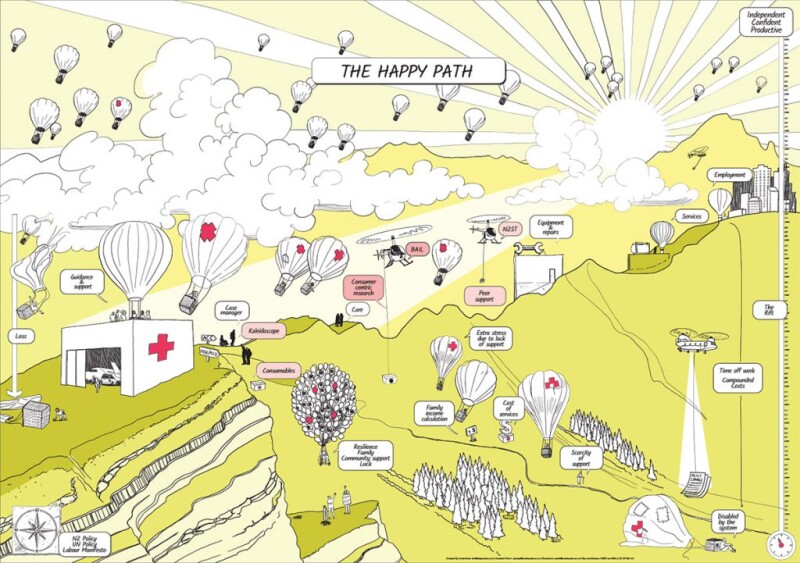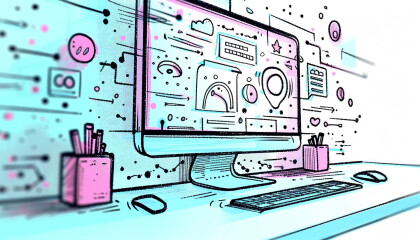When we first discussed the idea at MadeCurious, I wasn’t asked to create ‘Colabs’, I was asked to create a ‘lab’.
I never really questioned the word lab. Instead, I just jumped into the creation process. It was a word I was already familiar with in a professional setting. To me, it was a common term used to describe start-up incubators, vehicles for innovation, and in-house research facilities.
It never occurred to me to think of the word lab in its original, longer form – laboratory. A laboratory has a very different meaning. When I think about a lab, I think of something neat, fun, and approachable. When I think of a laboratory, it’s more of a serious place where people conduct rigorous experiments.
It may seem strange to dwell on the difference between a lab and a laboratory, but I think the story of Colabs is deeply rooted in the semantics of the words we use, and the way we communicate.
Lab vs. Laboratory
Colabs has many interconnected goals, but two base purposes: innovation and experimentation.
Innovation: Colabs is designed to help people work together, communicate effectively and explore challenging, systemic problems. In this way, I think of it as a lab – approachable, exciting and useful.
Experimentation: Colabs can be described in a more direct manner as a facility for conducting workplace experiments to advance an organisation’s strategic objectives. In this way, it’s more of a laboratory.
When the two meet, the true magic of Colabs happens.
A Colab has three stages, each as important as the next, and all working towards systemic organisational change.
- Visualisation – to gain clarity.
- Ideation – to develop ideas.
- Experimentation – to test solutions.
Okay, that’s what a Colab is, but why should it exist in the first place?
Pain Points vs. Problems
I think that people tend to look for the quick fix – the solution to a pain point, not a problem. Understanding the difference between a pain point and a problem is essential.
Pain point: The acute impact – the regular irritation or inconvenience experienced in an organisation or individual’s workflow. It’s the immediate issue most people are focused on fixing.
Problem: The systemic cause of a pain point. The root issue that needs to be solved in order to effect real change. Often, just solving a pain point can make the real problem worse.
Colabs is a facility aimed at investigating the problem that causes the pain point. It focuses on the root cause, gains clarity on the series of events that causes the problem, and brings people together to understand the situation and develop ideas for solving that problem. When the problem is solved, the pain point is also solved.
There are some key reasons why an organisation would implement a Colab.
- Capability: you may not have the in-house skillsets or resources available to explore and potentially solve a challenging organisational problem.
- Perspective: fresh eyes without organisational bias are essential to challenge assumptions, ask good questions, and notice the things being overlooked. It can be hard to bring the right perspective to a problem from within your own team.
- Dedication: Colabs lives or dies based on its reputation and its ability to deliver results. There is a clear incentive to be as successful as possible.
The Culture of Change
Innovative culture is a difficult thing to create. All it takes is one negative or counterproductive employee to bring open communication to a standstill. Over time, culture can work against innovation, stifling great ideas and robust discussion.
The primary benefit of a Colab is establishing an internal innovation framework. Think of a Colab as extra horsepower for your company culture. By creating a safe, structured place to raise important issues, test ideas and design new ways of working, an organisation is empowering deliberate and experimental culture change. This is something that continues long after we leave.
That’s essentially it. Colabs is a framework for innovative culture change implemented by a multifunctional team built from within the organisation’s own ranks. As a group, participants dig into a problem using their skill sets and perspectives to add value to the process. Once a problem is identified, Colabs ideates and tests solutions quickly with minimal cost.
Building a reputation based on quick, valuable wins, Colabs sets up a problem solving engine within the host organisation, built from its own people.
The goal is always to walk away, leaving a growing culture of innovation with all the tools it needs to flourish.
Read more about Colabs here















